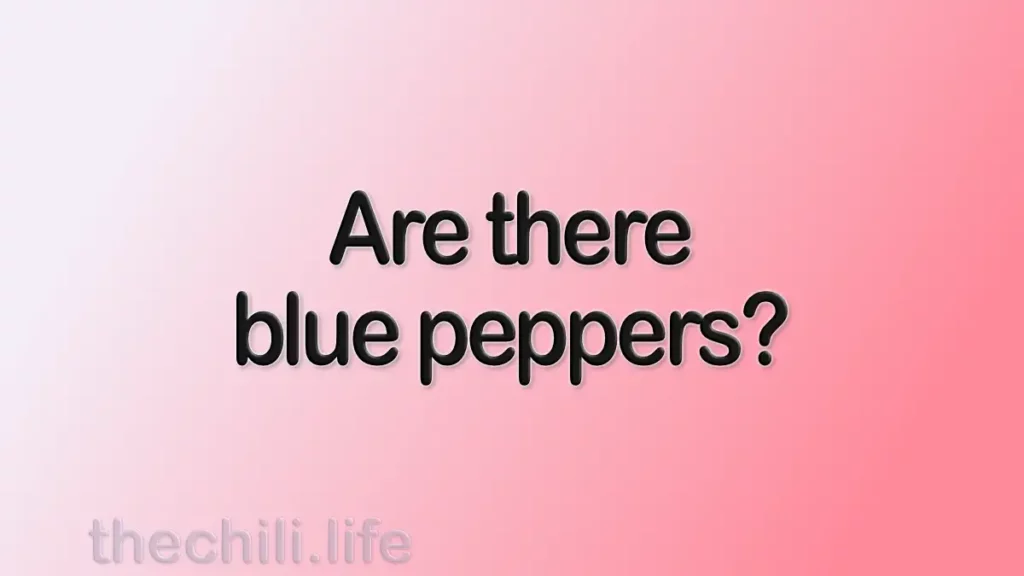If you enjoy growing chilies, like me, you may have been wondering about different types and colors of fruits, such as blue peppers. Peppers of this color are not very common, but they are eye-catching and intriguing. They are also very spicy, ranging from mild to extremely hot. In this blog post, I will introduce you to two of the blue chilis you can try to grow yourself.
What are blue peppers?
Blue peppers are not blue, but rather a dark purple that can look blue under certain light conditions. They are the result of a genetic mutation that affects the production of anthocyanin, a pigment that gives fruits and vegetables their color. Anthocyanin is also responsible for some chilies’ red, purple, and black colors, such as the black pearl or the purple jalapeño. These peppers have a high anthocyanin concentration, making them appear blue or purple.
Blue chilis are not a specific variety of chili but rather a trait that can occur in different species and cultivars. Some of the most common species that produce blue chilis are capsicum annuum, capsicum chinense, and capsicum baccatum. These are the same species that produce some of the most popular and hottest chilies in the world, such as the jalapeño, the habanero, and the aji. Of course, peppers that are blue can have different shapes, sizes, and flavors, depending on the variety they belong to.
| Name | SHU | Species | Land of origin |
| Filius Blue | 30,000 – 50,000 | Capsicum annuum | Mexico |
| Blueberry | 1 | Capsicum annuum | Unknown |
Two blue peppers to grow
You can choose from some blue peppers, depending on your taste and preference. Here are two of the best ones to grow in your garden, from not that strong to very hot.
- Filus Blue: This is a capsicum annuum variety that produces curved, and dark purple peppers that turn red when ripe. They have a medium heat level when unripe, similar to a cayenne, but they get milder as they ripen. They have a crisp and zesty flavor. Filus Blue are great for stir-fries, curries, and soups. They also make great gifts and ornamental peppers, as they add a splash of color to your garden or kitchen. If you want to learn more about what to do with hot peppers, check out our article here.
- Blueberry: This capsicum chinense variety produces small, round, and dark purple peppers that turn red when ripe. They have a hot to very hot heat level, similar to a habanero, and a fruity and floral flavor. They are great for making hot sauces, jams, and candies. They are also beautiful and eye-catching, and can be used as ornamental peppers or as gifts for your spicy-loving friends. If you want to discover more uses of peppers, read our article here.
These are just some of the blue peppers you can grow in your garden. There are many more varieties you can explore and experiment with. These chili peppers are not only beautiful and colorful, but also delicious and spicy. They are a must-have for any chili lover wanting to add variety and excitement to their collection.
Yes, there are blue peppers, but they are not naturally blue. They are actually purple peppers that appear blue under certain lighting conditions or when they are unripe.
The short answer is no. Some purple peppers look blue sometimes, but there are no truly blue peppers. This is because peppers have green chlorophyll and other pigments that can make them red, yellow, orange, purple, black, or white, but not blue. Blue is a rare color in plants and needs a special mix of pigments and light. So, if you see a blue pepper, it’s probably fake or modified.
No, they are really purple.

